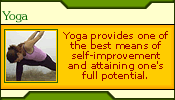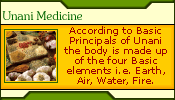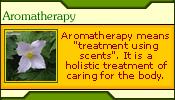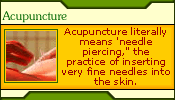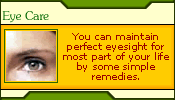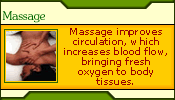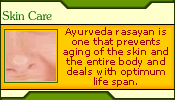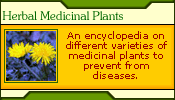|
11. Bhujangasana ( Cobra pose ) :
Lie on your stomach with your legs straight and feet together,
toes pointing backwards. Rest your forehead and nose on the ground.
Place your palms below the shoulders and your arms by the side of
the chest. Inhale and slowly raise your head, neck, chest and upper
abdomen from the navel up. Bend your spine back and arch your back
as far as you can looking upwards. Maintain this position and hold
your breathe for a few seconds. Exhale, and slowly return to the
original position.
This asana has great therapeutic value in the treatment of diseases
like cervical spondylitis, bronchitis, asthma and eosinophillia.
It removes weakness of the abdomen and tones up the reproductive
system in women. It exercises the vertebrae, back muscles and the
spine.
12. Shalabhasana ( Locust pose ) :
Lie flat on your stomach, with your legs stretched out straight,
feet together, chin and nose resting on the ground, looking straight
ahead. Move your arms under the body, keeping them straight, fold
your hands into fists and place them close to the thighs. Now, raise
your legs up keeping them straight together and stretching them
as far back as possible without bending your knees and toes. Hold
this position for a few seconds and repeat four or five times.
This asana helps in the treatment of arthirits, rheumatism and
low backache. The whole body is strengthened by this asana especially
the waist, chest, back and neck. Persons suffering from high blood
pressure or heart disease should not practice this asana.
13. Dhanurasana ( Bow pose ) :
Lie on your stomach with your chin resting on the ground, arms
extended alongside the body with the legs straight. Bend your legs
back towards the hips, bring them forward and grasp your ankles.
Inhale and raise your thighs, chest and head at the same time. Keep
your hands straight. The weight of the body should rest mainly on
the navel region. Therefore, arch your spine as much as possible.
Exhale and return slowly to the starting position, by reversing
the procedure.
Dhanurasana provides good exercise for the arms, shoulders, legs,
ankles, back and neck. It also strengthens the spine. It relieves
flatulence and constipation and improves the functioning of the
pancreas and the intestines. It should not be done by those with
a weak heart, high blood pressure and ulcers of the stomach and
bowels.
14. Makarasana ( Crocodile pose ) :
Lie flat on your abdomen. Spread your legs, with heels pointing
towards each other. Bring your left hand under the right shoulder
and grasp it. Grasp the left shoulder with your right hand, keeping
the elbows together, one upon the other on the ground. Your face
should be between your crossed hands. Relax and breathe normally
for two or three minutes. Then gradually go back to the sitting
position.
This asana completely relaxes both the body and the mind and also
rests the muscles. It is beneficial in the treatment of hypertension,
heart disease and mental disorders.
15. Vakrasana :
Sit erect and stretch legs out. Raise your right knee until your
foot rests by the side of the left knee. Place your right hand behind
your back without twisting the trunk too much. Then bring your left
arm from in front of you over the right knee. Place your left palm
on the ground near the heel of your right foot. Push your knee as
far as to the left arm. Twist your trunk to the right as much as
possible. Turn your face to the right over the right shoulder. Release
and repeat on the left side.
This asana tones up the spinal and abdominal muscles and nerves
and activates the kidneys, intestines, stomach, adrenaline and gonad
glands. It relieves cases of constipation and dyspepsia.
16. Ardhamatsyendrasana :
This is the half position of Matsyendrasana, which is named after
the great sage Matsyendra. Sit erect on the ground, stretching your
legs in front of you. Insert your left heel in the perineum, keeping
the left thigh straight. Place your right foot flat on the floor,
crossing the left knee. Pass your left arm over the right knee and
grasp the big toe of your right foot. Grasp your left thigh from
the rear with your right hand. Turn your head, neck, shoulders and
trunk to the right bringing your chin in line with the right shoulder.
Maintain this position for a few seconds, gradually increasing the
duration to 2 minutes. Repeat the same process on the other side
for the same duration.
This asana exercises the vertebrae and keeps them in good shape.
It helps the liver, spleen, bladder, pancreas, intestines and other
abdominal organs, and also stretches and strengthens the spinal
nerves. This asana is beneficial in the treatment of obesity, dyspepsia,
asthma and diabetes.
17. Paschimottanasana (Posterior stretching
pose ) :
Sit erect. Stretch your legs out in front of you, keeping them
close to each other. Bend your trunk and head forward from the waist
without bending your knees and grasp the big toes with your rest
your forehead on your knees. With practice, the tense muscles become
supple enough for this exercise. Old persons and persons whose spine
is still should do this asana slowly in the initial stages. The
final pose need be maintained only for a few seconds. Return to
the starting position gradually.
Paschimottanasana is a good stretching exercise in which the posterior
muscles get stretched and relaxed. It relieves sciatica, muscular
rheumatism of the back, backache, lumbago and asthmatic attacks.
It is also valuable in constipation, dyspepdis and other abdominal
disorders.
18. Gomukhasana ( Cow-face pose ) :
Sit erect on the floor, with your legs outstretched. Fold your
leg back. Place your left foot under the right hip. Similarly, fold
back the right leg and cross your right foot over your left thigh.
Place your right heel against the left hip. Both soles should face
backwards, one over the other. Now interlock your hands behind your
back. See to it that if your right leg is over the left, then your
right elbow should face upward and the left elbow downward. This
position is reversed when the leg position is changed. Hold the
pose for 30 seconds and then repeat the procedure reversing the
process. The practice of gomukhasana will strengthen the muscles
of the upper arm, shoulder, chest, back, waist and thigh. It is
beneficial in the treatment of seminal weakness, piles, urethral
disorders and kidney troubles. It also relieves varicose veins and
sciatica.
19. Pavanmuktasana ( Gas-releasing pose )
:
Lie flat on your back, hands by your side. Fold your legs back,
placing your feet flat on the floor ; make a fingerlock with your
hands and place them a little below the knees. Bring your thighs
up near your chest. Exhale and raise your head and shoulders and
bring your nose between your knees. This is the final position.
Maintain this pose for a few seconds and repeat three to five times.
Reverse the procedure to get back to the original position.
This asana strengthens the abdomineal muscles and internal abdominal
organs like the liver, spleen, pancreas and stomach.
It helps release excessive gas from the abdomen and relieves flatulence.
Persons suffering from constipation should do this exercise in the
morning after drinking lukewarm water to help proper evacuation
of the bowels.
20. Chakrasana ( Lateral bending pose ) :
Stand straight with your feet and toes together and arms by your
sides, palms facing and touching the thighs. Raise one arm laterally
above the head with the palm inwards up to shoulder level and palm
upwards when the arm rises above the level of your head. Then, bend
your trunk and head sideways with the raised arm touching the ear,
and sliding the palm of the other hand downwards towards the knee.
Keep your knees and elbows straight throughout. Maintain the final
pose for a few seconds. Then gradually bring your hand back to the
normal position. Repeat the exercise on the other side.
This asana induces maximum stretching of the lateral muscles of
the body, especially the abdomen. It strengthens the knees, arms
and shoulders and increases lung capacity.
|


